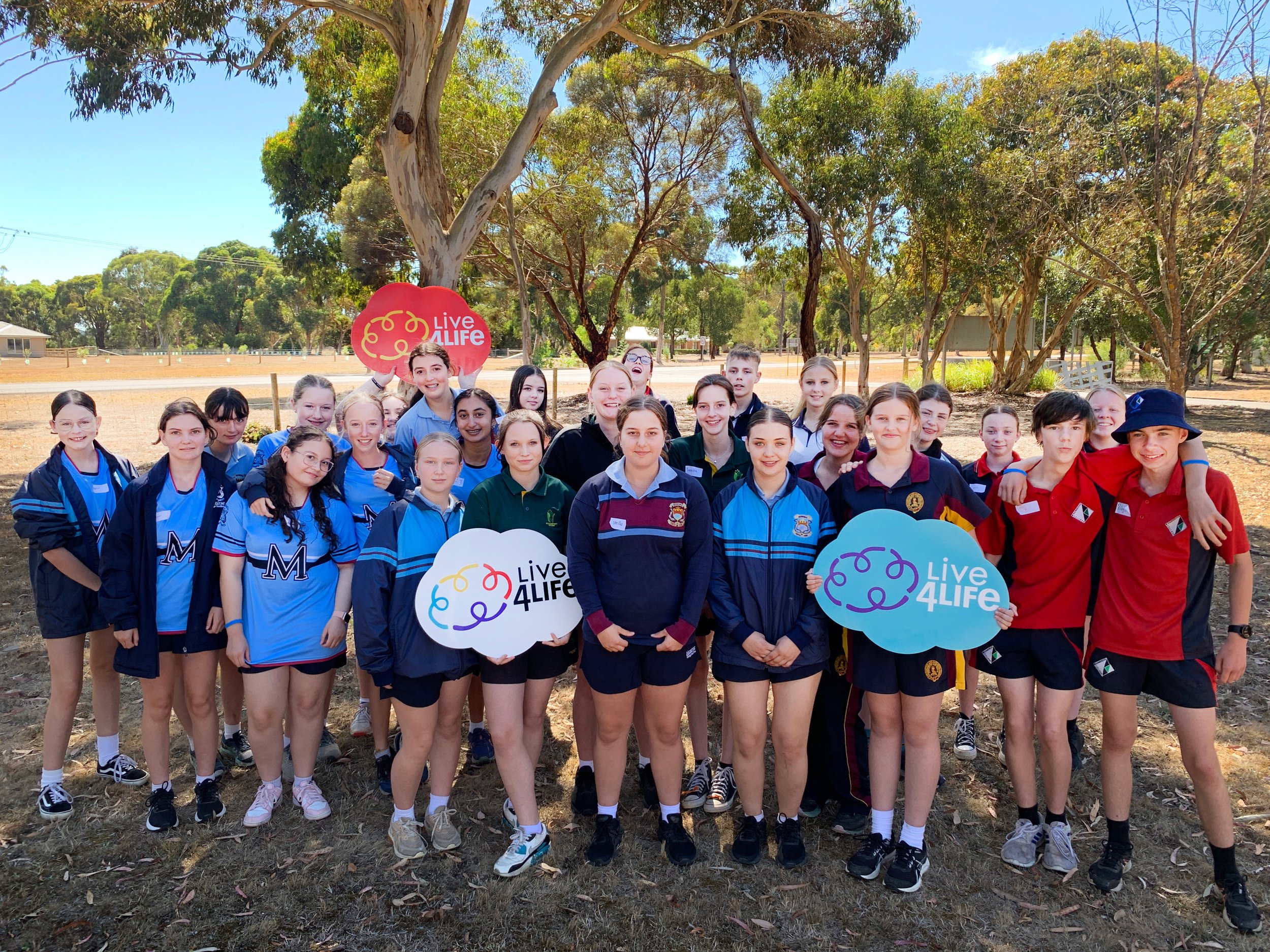
MEDIA RELEASES
Improving youth mental health and reducing suicide in rural and regional communities
Live4Life Media Release
14 April 2025
PREVENTION IS THE KEY TO OUR MENTAL HEALTH CRISIS
by Bernard Galbally
CEO of youth mental health and suicide prevention organisation Live4Life
Suicide is the leading cause of death among young people aged 16-24.
Mental ill-health and suicide among young people is an urgent national problem — and it is alarmingly acute in rural and regional areas. Latest figures from the ABS show that the suicide rate in regional areas is more than 50% higher than in major cities. In remote communities, it is more than double. The over-representation of these communities is a neglected, escalating crisis which demands action now.
This problem is not just in Australia. Worldwide, evidence suggests that in many countries the mental health of young people has been declining over the past two decades. The US Surgeon General has labelled the deteriorating situation a “youth mental health crisis”.
An article in The Lancet Psychiatry in August 2024 made no bones about how critical this is: “Mental ill health, which has been the leading health and social issue impacting the lives and futures of young people for decades, has entered a dangerous phase.”
With this in mind — and in the context of a looming Federal election — it is of course welcome that both major parties have promised significant funding of youth mental health services. However, there are two significant problems to these ‘solutions’.
The first is the very serious issue of workforce shortages. We do not have enough trained clinicians, psychiatrists, psychologists and therapists to fill existing positions in our services. Who is going to staff the additional services that both major parties are saying they will fund?
The issue of workforce shortages is particularly acute in rural and regional areas and cannot be fixed overnight. Recruiting and then training a qualified workforce takes years and requires a national strategy and commitment. It is a four to 10 year project.
And there’s another problem. Nowhere in both parties’ announcements was there any mention of prevention measures. Despite significant investment by the Australian Government over the last 15 years, we have not seen any improvement in mental health outcomes. We need to look at other ways of making an impact. We need to stop and consider why so many people are struggling with their mental health in the first place, and what measures can be put in place so that all Australians — especially young people — have the knowledge and tools to understand and look after their mental health in the normal course of their day-to-day lives. It is now widely accepted that one of these ways is evidence-based, proven, place-based, prevention initiatives.
Currently, funding for prevention makes up less than 1% of the national mental health budget. Yes, you read that right. It’s not a typo. Less than one percent.
Why is prevention important? And not just important, essential? Because, as a society, we want everyone to be able to live full lives. And because the economic costs of mental health care services are escalating unsustainably. The direct economic costs of mental ill-health and suicide in Australia were estimated at $43-$70 billion in 2018-2019. The cost of disability and premature death due to mental ill-health, suicide and self-inflicted injury is equivalent to a further $151 billion.
Crisis response alone is not working — particularly in rural and regional communities.
The promise of more mental health services, more headspace services and youth specialist centres is welcomed and will help — if we are able to agree on a national strategy to address the workforce issue. But this will take years. The precarity of mental health and wellbeing of those living in rural and regional Australia has never been more acute. These communities need solutions now.
We can’t keep picking up the pieces and letting young people fall through the ever-widening gaps of an already over-stretched mental health system. Ask any parent if they prefer to wait until their child has a mental health crisis requiring acute treatment.
We can do better. We already know how to do better. Study after study points to prevention as where we can make the biggest, most immediate impact — and protect young people before a crisis occurs.
Programs like Live4Life are doing this right now through a community empowerment model, which independent evaluations show is effective. The Australian Government’s National Suicide Prevention Strategy and the National Children’s Metal Health and Wellbeing Strategy provide a clear direction and process for delivering a better approach to mental health and suicide prevention.
A major plank in effective prevention is mental health education. Evidence shows that improving the mental health knowledge of secondary school-aged students — and also improving the mental health knowledge of the adults who support them — builds community resilience in addressing mental ill-health and reduces suicide.
At a fraction of the cost of shoring up mental health services, we can give young people and their communities the skills and knowledge to support themselves and one another. To understand the first signs of mental ill-health. To know what to do, how to help, who to go to.
We can help young people living in rural Australia to help themselves and each other before mental ill-health takes hold. Every young person, wherever they grow up, deserves to live a full life.
Bernard Galbally is CEO of Youth Live4Life, a registered charity responsible for the award-winning, youth mental health and suicide prevention model, Live4Life. Implemented in 14 rural LGAs across Victoria and Tasmania, Live4Life is the only program of its kind designed specifically for rural and regional communities, where it has delivered evidence-based mental health education to over 29,900 students, and trained more than 3,000 adults in Youth Mental Health First Aid® — all without placing extra burdens on existing mental health services.
Download a copy of the MEDIA RELEASE here.
Media Images
High resolution images of Live4Life’s programs can be downloaded here.
Media Backgrounder
Download the Live4Life Media Backgrounder.

